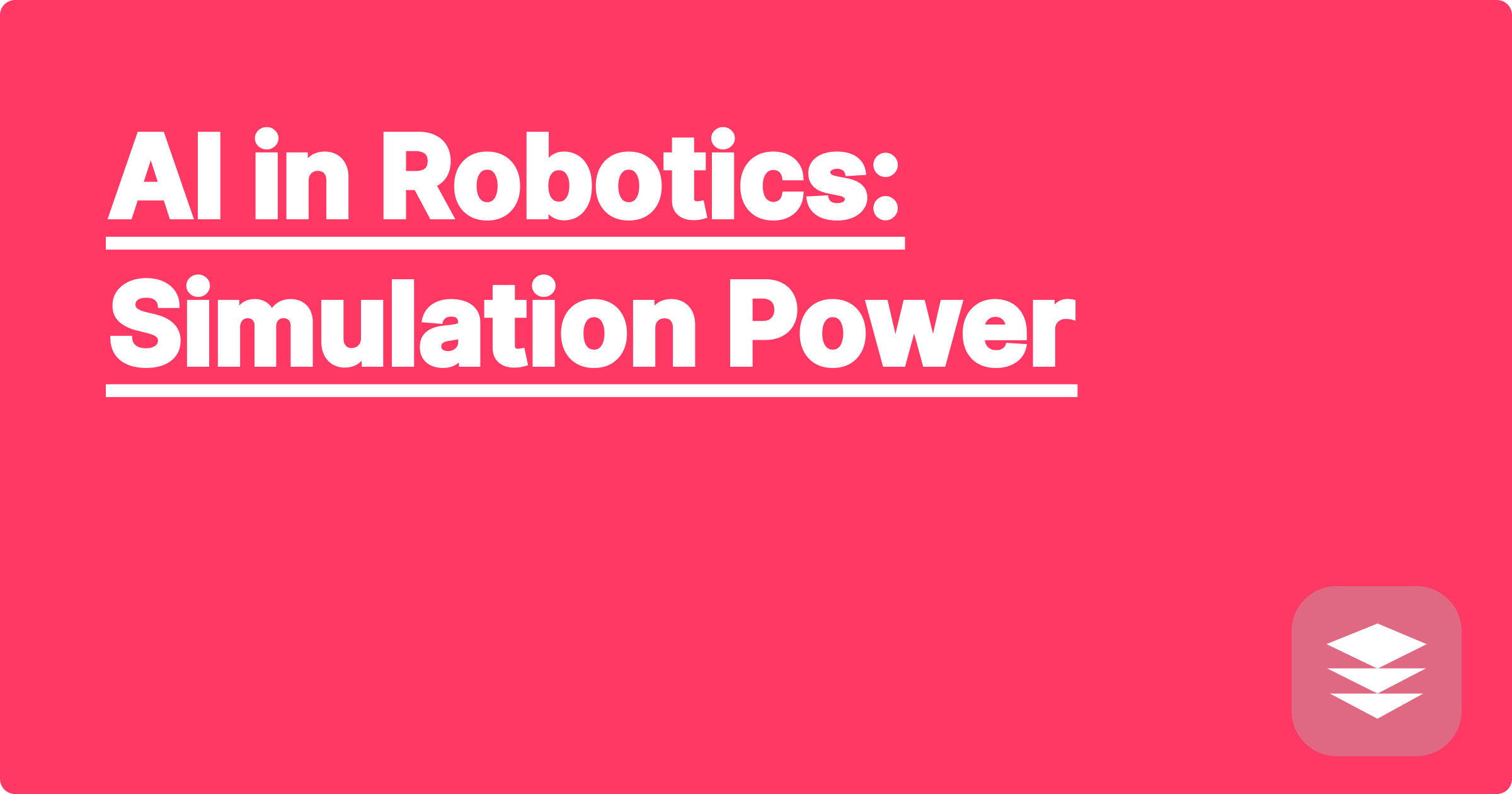
The world of robotics is experiencing a seismic shift, driven by the incredible power of artificial intelligence. Building and testing robots has traditionally been a costly and time-consuming process, often requiring extensive physical prototypes and laborious manual adjustments. However, AI-powered simulation is changing the game, offering a powerful new paradigm for robotics research and development. This emerging field allows researchers and students to design, test, and refine robotic systems in virtual environments, drastically accelerating the development cycle and unlocking unprecedented levels of innovation.
For STEM students, particularly those in robotics, this shift presents both a challenge and an opportunity. Mastering these new AI-driven tools is crucial for staying at the forefront of the field. This blog post will delve into the transformative potential of AI in robotics simulation, providing practical guidance and real-world examples to empower students and researchers to harness this cutting-edge technology. We'll explore how AI can streamline the design process, enhance testing efficiency, and ultimately revolutionize the way robots are built and deployed.
Developing robotic systems is inherently complex. It involves intricate mechanical design, sophisticated control algorithms, and extensive testing to ensure reliable performance in real-world scenarios. Traditionally, this process relied heavily on building physical prototypes, which is expensive, time-consuming, and limits the scope of experimentation. Each iteration of a design requires building a new prototype, leading to significant delays and resource constraints. Furthermore, testing physical robots in real-world environments can be risky, especially in applications like disaster relief or space exploration. The limitations of physical prototyping pose a significant barrier to innovation in robotics, hindering the development of more sophisticated and capable robotic systems.
AI-powered simulation offers a transformative solution to these challenges. By creating virtual environments that accurately mimic real-world physics and sensor data, AI allows researchers to test and refine their designs without the need for physical prototypes. Tools like PyBullet, Gazebo, and MuJoCo provide robust physics engines that can simulate complex interactions between robots and their environment. Furthermore, AI algorithms can be used to generate realistic sensor data, such as camera images and lidar scans, enabling the development and testing of perception algorithms in the virtual world. Platforms like NVIDIA Isaac Sim leverage AI to accelerate the training of robot control policies through reinforcement learning, allowing robots to learn complex behaviors in simulation much faster than in the real world.
Let's consider a practical example: designing a robot arm for a manufacturing task. First, using a simulation platform like PyBullet, you would create a virtual model of the robot arm and the factory environment. Next, define the task, such as picking and placing objects on a conveyor belt. You can then use an AI algorithm, like a reinforcement learning agent, to train the robot arm to perform the task within the simulation. The AI agent will experiment with different control strategies, learning from its successes and failures in the virtual environment. Throughout this process, you can monitor the robot's performance using metrics like task completion time and energy consumption. Once the robot achieves satisfactory performance in simulation, the learned control policy can be transferred to the physical robot.
AI-powered simulation has already demonstrated its potential across various STEM fields. In autonomous driving, companies like Waymo and Tesla extensively use simulation to train their self-driving cars, exposing them to millions of virtual miles before they ever hit the road. This drastically reduces the need for costly and potentially dangerous real-world testing. In robotics research, AI-driven simulation is enabling the development of more agile and adaptable robots. Researchers are using simulation to train robots to navigate complex terrains, manipulate delicate objects, and even collaborate with humans on intricate tasks. In medical robotics, simulation is playing a crucial role in developing surgical robots and training surgeons to use them effectively. By practicing complex procedures in a safe and controlled virtual environment, surgeons can improve their skills and reduce the risk of complications during real surgeries.
For STEM students, mastering AI-powered simulation tools is essential for academic success and future career prospects. Start by familiarizing yourself with popular simulation platforms like PyBullet, Gazebo, and NVIDIA Isaac Sim. Explore online tutorials and courses to learn the basics of robot modeling, simulation, and control. Engage in hands-on projects to gain practical experience. For example, try simulating a simple robot arm performing a pick-and-place task. Don't be afraid to experiment and iterate. Simulation provides a safe and cost-effective environment to test different ideas and learn from your mistakes. Finally, collaborate with your peers and professors. Sharing your experiences and challenges can accelerate your learning and lead to new discoveries.
To conclude, AI-powered simulation is revolutionizing the field of robotics, providing powerful new tools for designing, testing, and deploying robotic systems. By embracing these technologies, STEM students and researchers can unlock unprecedented levels of innovation and accelerate the development of the next generation of robots. Explore the resources mentioned in this post, experiment with different simulation platforms, and start building your expertise in this exciting and rapidly evolving field. The future of robotics is in simulation, and the time to get involved is now.
AI for CAD: Design Optimization Hacks
AI for Physics: Problem Solver
AI-Driven Lab Data: Analysis Made Easy
Boost Your GPA: AI Study Hacks
AI Calculus Solver: Instant Help
AI in Robotics: Simulation Power
AI Chemistry Solver: Equation Ace
AI Algebra Solver: Get Unstuck